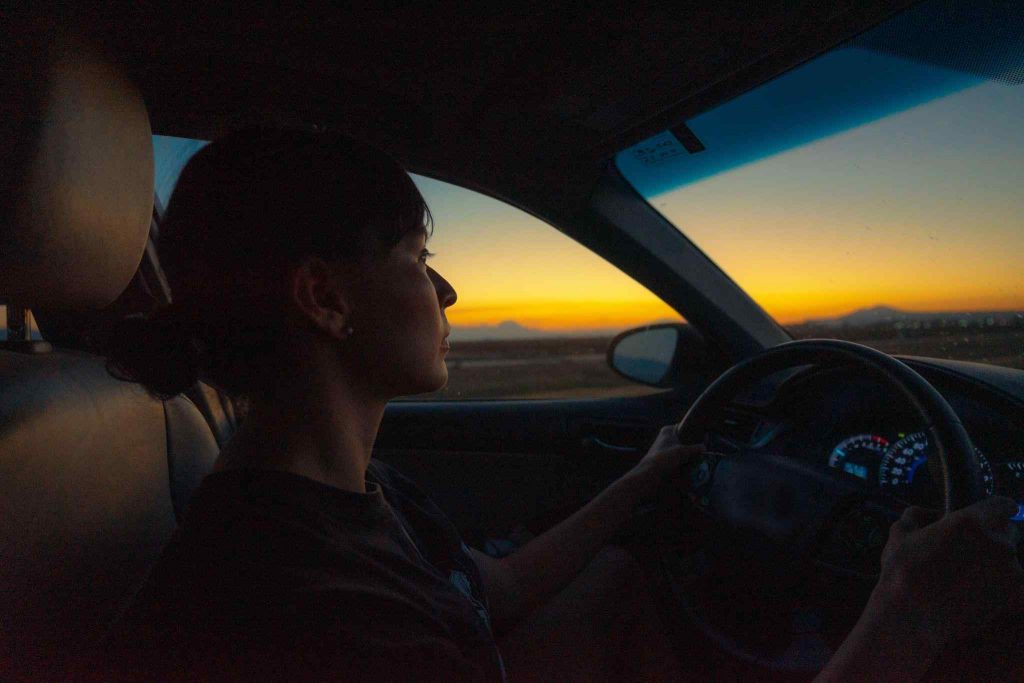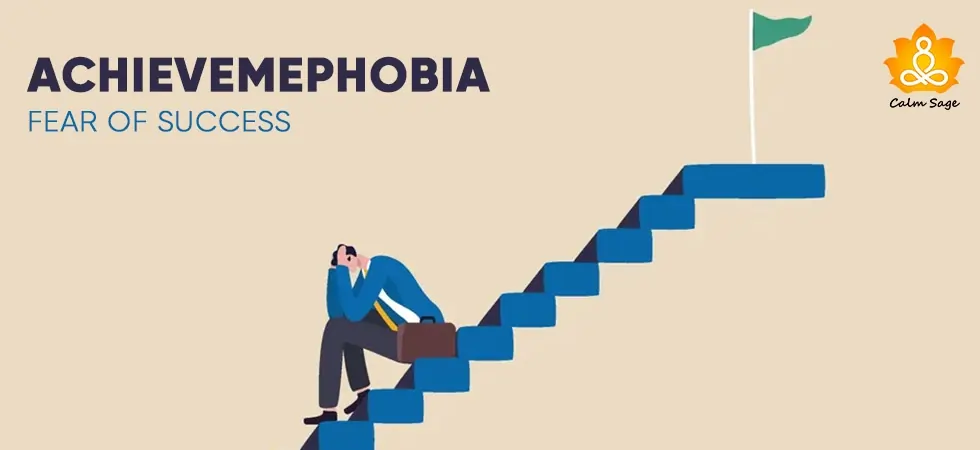What Is Amaxophobia: The Fear Of Driving (And How To Overcome It)

Sitting in a car after experiencing a traumatic accident can make you nervous as it is. And let’s be real, a little nervousness and anxiety after surviving a car accident are understandable. However, it can be more than just nerves when the idea of driving a car or even traveling in a vehicle makes you break out in a panic.
This intense panic or anxiety caused by the thought of driving can be named Amaxophobia, Ochophobia, Motorphobia, or Hamaxophobia. What all these terms mean is the same though: The fear of driving.
While amaxophobia is the fear of driving, it can still make you anxious even when you’re a passenger in a car, bus, airplane, or train. While unheard of, the fear of driving is a common phobia and can be life-limiting with serious consequences.
In this blog, let’s explore what is amaxophobia (the fear of driving), the symptoms, what other phobias can be associated with the fear of driving, and how to overcome the fear of driving.
What Is Amaxophobia: The Fear Of Driving?

Amaxophobia is the fear of driving, one that can cause severe anxiety and fear when you either think about driving or riding in a vehicle. This fear of driving can also be called driving anxiety and can be described as experiencing severe distress at the thought of driving.
You might even experience distress while sitting in the passenger seat of either a car, bus, or other vehicles. Other people also experience anxiety when driving on highways, in big cities, over a bridge, at night, and through a tunnel.
Regardless of this, people avoid driving or situations that may require them to travel in a vehicle because of this fear. If left unaddressed, driving anxiety can severely disrupt a person’s daily routine and cause them mental anguish.
While amaxophobia is not officially recognized as a disorder in the DSM-5, it can still be categorized as a specific phobia that can cause mental and emotional anguish.
The Symptoms Of Amaxophobia
The fear of driving or driving anxiety symptoms can include:
- Intense fear or anxiety about being in an accident
- Having a fear of getting injured
- Having a fear of being trapped in the car or other vehicle
- Sweating or trembling
- Increased heart rate
- Nausea or dizziness
- Panic attacks
Just like any other specific phobia, the fear of driving can also range from mild to severe. Even if you struggle with the fear of anxiety, traveling in a car or vehicle with a loved one can be okay while others may not be comfortable traveling in a car but can find it easy to travel in a bus. In severe cases, an individual may not be able to travel at all.
What Causes The Fear Of Driving?

Several factors can contribute to the fear of driving. Some of these factors can include:
- Family History: If you have a close family member with amaxophobia or other similar anxiety disorder, then it can increase the risk of developing the fear through genetics.
- Observation: If you grow up hearing about car accidents or other fatal road accidents, then this can also cause you to develop the fear of driving or driving anxiety.
- Past Trauma: If you or your loved one have been in (or had suffered grievous injuries) a road accident, then this traumatic experience can also contribute to the fear of driving.
It’s common for phobias, especially specific phobias, to co-occur with other disorders such as panic disorder or social anxiety disorder. If you suspect yourself or your loved one with amaxophobia, then you should consult a mental health professional. Only a professional can determine the severity of a phobia and can recommend a treatment plan.
To make a diagnosis, a professional may examine an individual for signs such as:
- Uncontrollable anxiety symptoms such as trembling, shortness of breath, heart palpitations, etc.
- Going out of the way to avoid the trigger
- Fear, anxiety, or avoidance resulting in severe distress or impaired functioning
- Symptoms of anxiety lasting more than 6 months
- The fear is not caused by other mental health disorders such as PTSD, panic disorder, or agoraphobia.
Related Phobias To Know
The fear of driving or driving anxiety can often be associated with other phobias such as:
-
Agoraphobia
Driving anxiety is often associated with agoraphobia, the fear of feeling trapped in a situation with no escape. Agoraphobia can lead one to avoid all social situations to avoid feeling trapped. Driving can trigger agoraphobia in many ways.
-
Claustrophobia
Similar to agoraphobia, claustrophobia is a fear of enclosed spaces, and driving can trigger this fear, especially when traveling by car. Some people may feel fearful of traveling in a car while others may experience distress while driving.
-
Dystychiphobia
Dystychiphobia or the fear of accidents is another phobia that can be associated with amaxophobia. If you struggle with this fear, then you try to avoid all situations that may put you at risk of being in or causing an accident. Driving can trigger the fear of accidents.
-
Hodophobia
Hodophobia or the fear of travel can also trigger driving anxiety. This fear is not limited to car travel, though. Some people are even comfortable traveling to familiar places but are hesitant to travel or drive to new and unexplored places.
How To Overcome The Fear Of Driving?

There are treatment options for specific phobias that include psychotherapy, medications, and self-coping techniques. Here are some of them:
-
Psychotherapy
With the help of talk therapy such as cognitive-behavioral therapy (CBT), you can work toward overcoming your fear of driving. One of the first lines of treatment, CBT can help address irrational thoughts about driving. This therapy approach challenges your thinking process and helps you reframe your thoughts.
Another psychotherapy approach to treat specific phobias is exposure therapy. A professional may expose you to certain triggers to help you face your fears and overcome the phobia. This therapy approach may include you looking at clips or images of people driving, using VR training, or helping you drive in a controlled environment.
-
Medications
If you’re experiencing severe driving anxiety then a professional therapist can prescribe medications such as anti-anxiety and antidepressants to help you control your symptoms and ease driving anxiety. Medications can work best when combined with psychotherapy and self-coping techniques.
It is recommended that you not take medications without a prescription. Some medications can have side effects that can worsen your symptoms.
-
Self-Coping Techniques
Apart from psychotherapy and medications, self-coping techniques can help you ease your anxiety symptoms and cope with driving anxiety. You should not practice these tips when driving.
- Practice deep breathing. When you feel anxiety rising, you can control it by focusing on your breathing. You can sit in a comfortable pose or lie on your back to practice deep breathing. Here are some deep breathing exercisesyou can try.
- Practice mindfulness. Mindfulnessrequires you to be aware of your surroundings, the sensations you are experiencing, and grounding yourself in your reality without judgment. You can practice mindfulness by sitting quietly and focusing on your breathing. You can also take a walk in nature to ease your mind.
- Practice guided imagery. This technique involves relying on your imagination and visualizing yourself in a place that you find relaxing. You can imagine your happy place, a quiet spot in the mountains, or sitting on a bench in a park.
Final Thoughts
The consequences of unaddressed and untreated amaxophobia (the fear of driving) can be severe. It can not only affect your personal and social life but your professional ones too. Of course, the impact of the fear of driving depends on the circumstances. If you live in big cities, the impact may not be huge but if you live in a rural area, the idea of driving long distances for simple errands can be severe.
If you or your loved one is struggling with driving anxiety or the fear of driving, then you should reach out for professional consultation and help. Amaxophobia can take a heavy toll on your life and health but with the right treatment, you can control your symptoms and overcome the fear of driving.
I hope this article helped you understand what amaxophobia is (the fear of driving), the symptoms, causes, impact, and how to overcome the fear of driving. For more, you can write to us at info@calmsage.com or DM us on social media.
You can also share your thoughts with us in the comments section below!
Take Care.




















